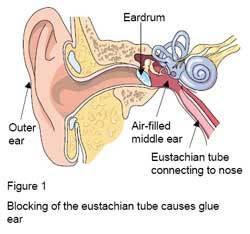What Is a Grommet Insertion?
The ear is made up of three parts, the outer, middle, and inner ear. The ear drum stretches between the outer and middle ear and is made of thick skin. Sometimes, the fluid that has built up in the middle ear cannot drain back through to the nose, causing hearing problems and infections. Such a case calls for a grommet insertion.
What Is Grommet Insertion Surgery?

Grommet insertion surgery is necessary when patients are suffering from a buildup of fluid in the middle ear, which can lead to hearing difficulties and infection.
The surgeon administers general anesthesia before shining a fine microscope down the ear tube. Performing a myringotomy by making a small cut in the eardrum, the surgeon pushes a thin sucking instrument through the hole and into the middle ear. With this instrument, the surgeon draws out the fluid . To complete the grommet insertion surgery, the surgeon plugs the hole with a small, hollow plastic tube called a grommet. The flanges at either end of the grommet hold it in place in the eardrum. The grommet allows air to flow easily from the ear tube into the middle ear to dry up any remaining fluid. The entire procedure can be performed as an in-patient procedure, and both ears can be treated on the same day if necessary.
After grommet insertion surgery, most patients feel little to no pain. The fluid remaining in the middle ear dries within 6 to 8 weeks, leading to improved hearing. The grommet remains in place for approximately 1 year. As the fluid dries up, the hole in the ear drum reduces in size and squeezes the grommet out, which often gets stuck in ear wax in the ear tube.
Why Is It Done ?
Either acute middle ear infection called otitis media or a blockage of the Eustachian tube known as glue ear are the most common reasons that insertion of grommets is required. In the majority of cases, these conditions affect children but adults can also be affected.
Otitis Media – This is an ear infection with the following symptoms:
- Earache
- Deafness
- Fever
- Feeling of fullness in the ear
- Drainage of blood or pus
- Feeling unwell
- Loss of appetite
- Irritability
- Loss of balance
Because grommets allow air in from the outside, enabling fluid and mucus to drain normally, future episodes of acute otitis media are reduced as well as an immediate improvement in hearing. Parents of children afflicted with this condition notice an improvement in balance, ability to walk, disposition and sleeping.
Glue ear – Is a chronic ear infection
A sticky fluid gathers inside the middle ear. Because the middle ear is normally filled with air instead of fluid, hearing can be affected when you have glue ear.
What are the benefits of surgery?
A grommet (small plastic or metal tube) allows air to enter the middle ear, preventing fluid build up.
How Is a Grommet Insertion Done?
Healthcare professionals put patients under general anesthesia and shine a microscope through the ear to make a small cut in the ear drum. The fluid accumulated is vacuumed out and a tiny, hollow plastic tube is inserted into the hole. This is called grommet insertion. The grommet lets air pass into the middle ear, drying up any fluid. Patients are usually discharged on the same day after a grommet insertion.
Possible Complications
As with any operation under general anaesthetic, there is a very small risk of complications related to your heart and lungs. The tests that you will have before the operation will make sure that you can have the operation in the safest possible way and will bring the risk for such complications very close to zero.
The operation is successful in about 70% of patients. The remaining 30% might need the grommet re-inserted on one or more occasions.
If you follow the advice listed above, the grommet is unlikely to cause you any problems. Occasionally people notice a popping or clicking in the ears. This is not harmful and is expected and you should not worry about it.
Recovery Time
After the grommet is inserted, it takes six to eight weeks for the fluid behind the ear to dry up completely, at which point hearing should return to normal. The grommet stays inserted in the ear drum for approximately one year.
In most cases, once the drainage issues are under control the eardrum naturally squeezes the grommet out into the ear tube where it can be easily removed. When this does not happen naturally, then a grommet removal procedure is usually in order.














